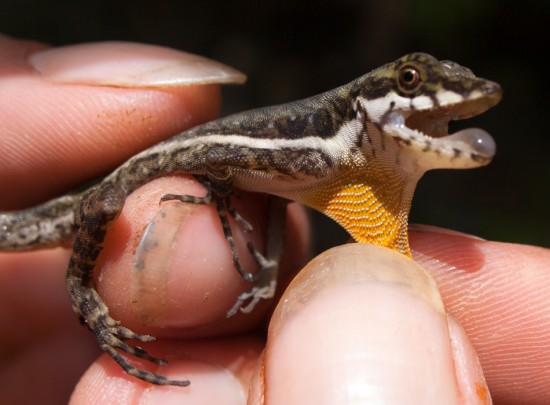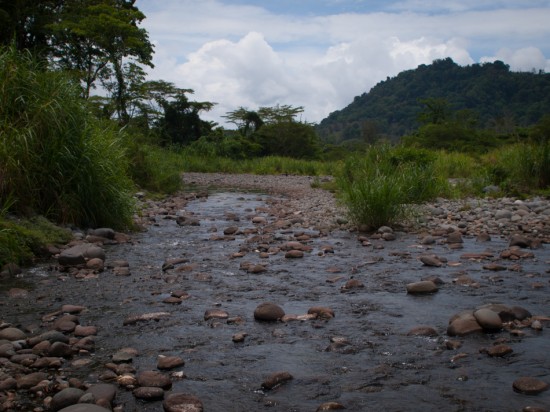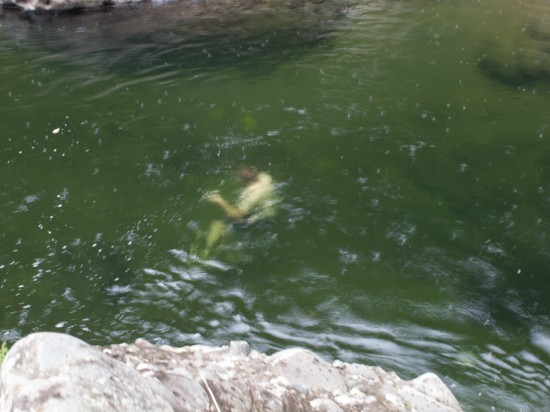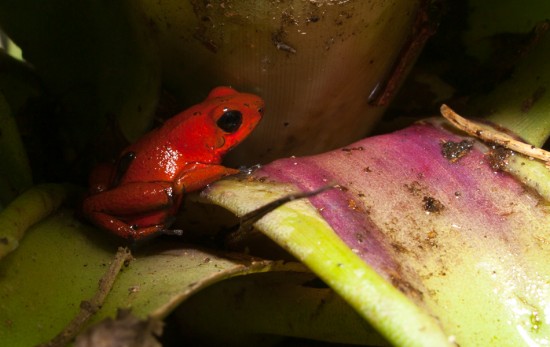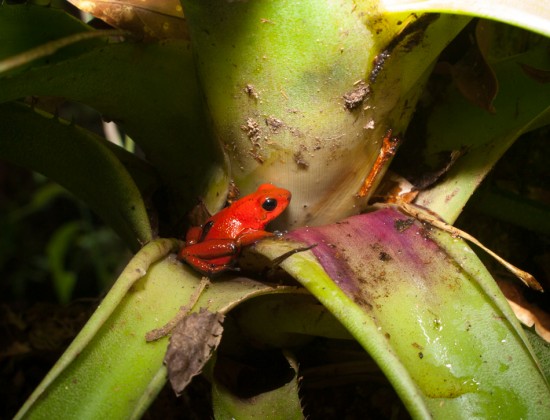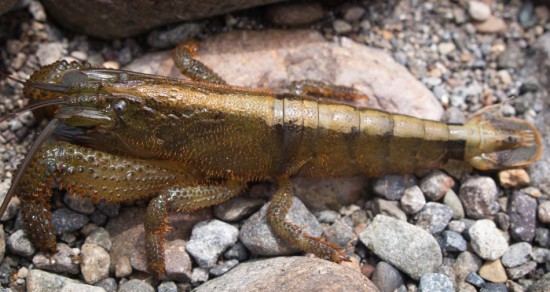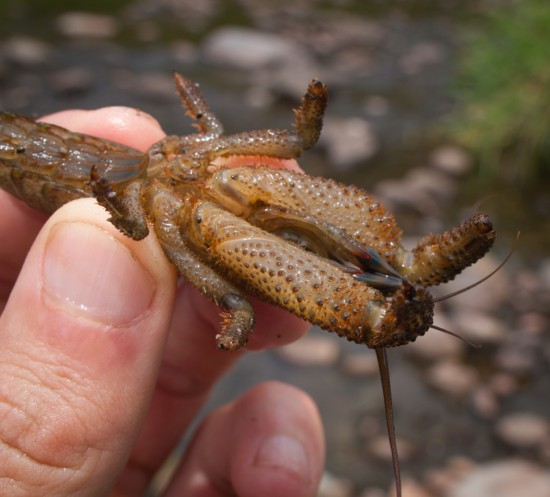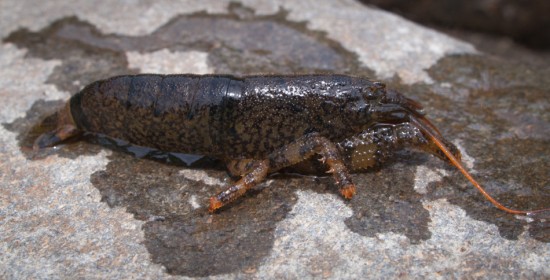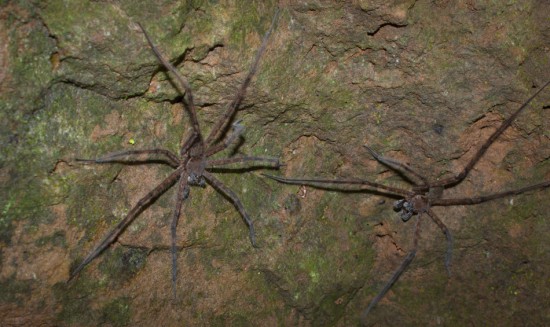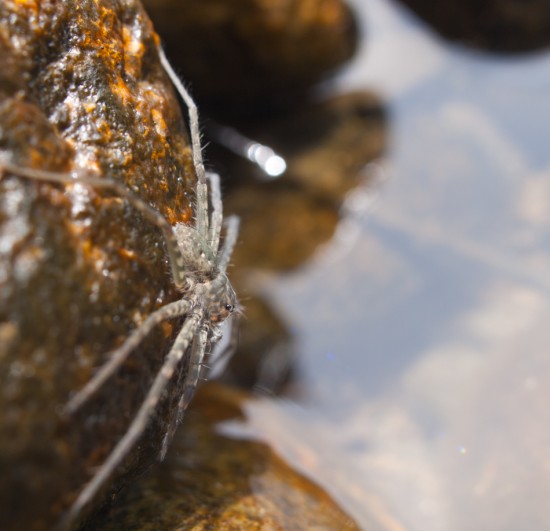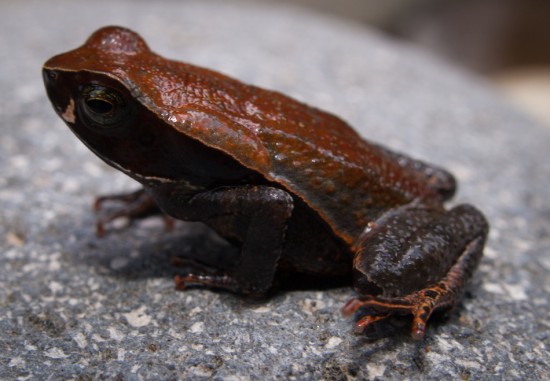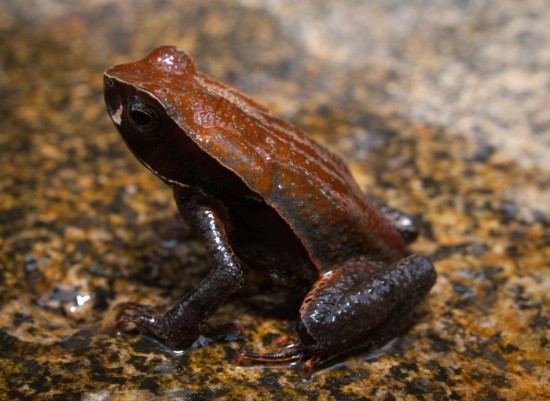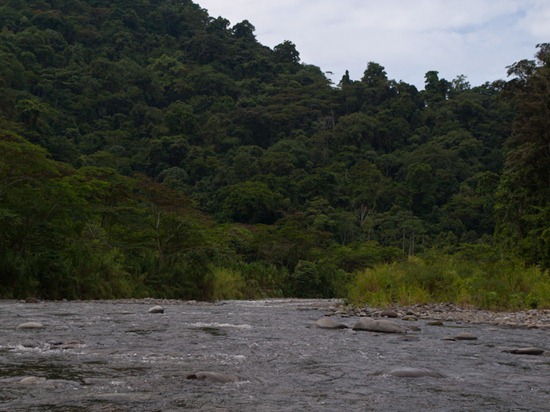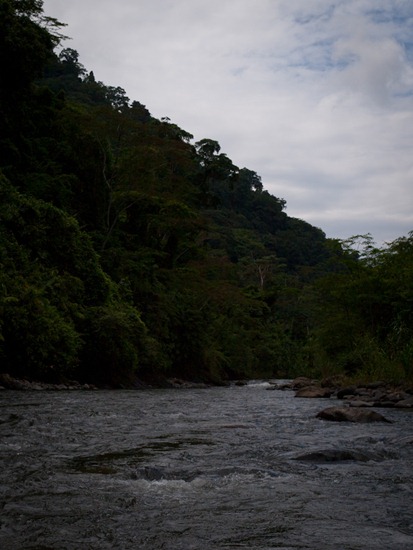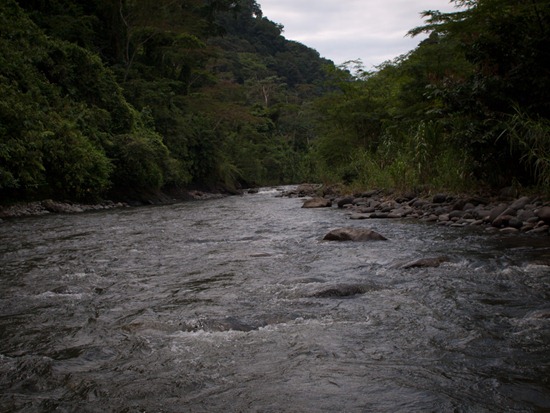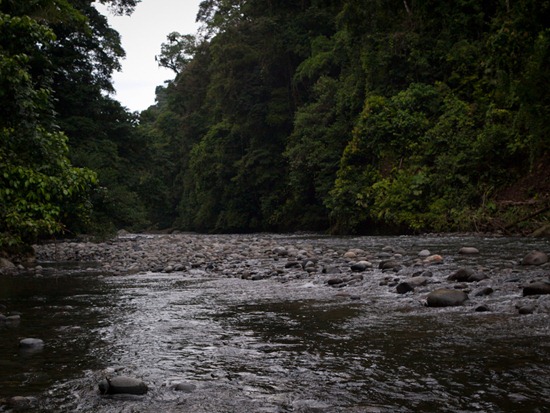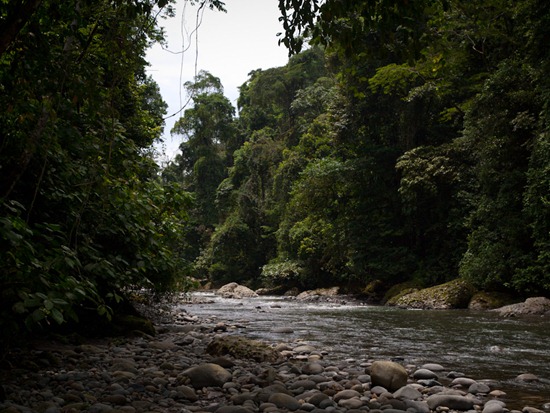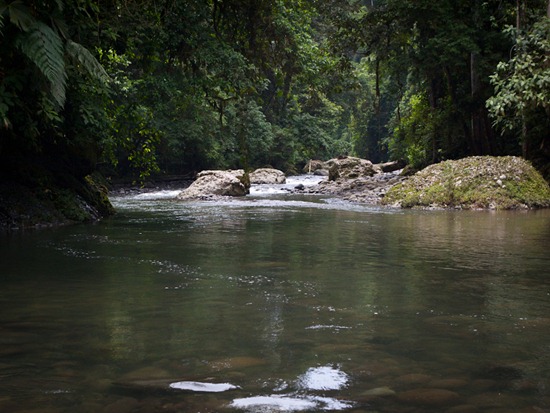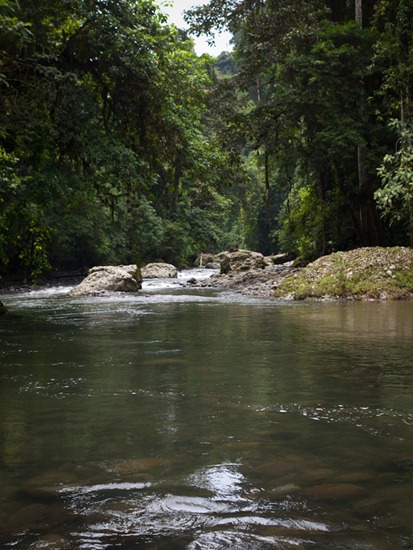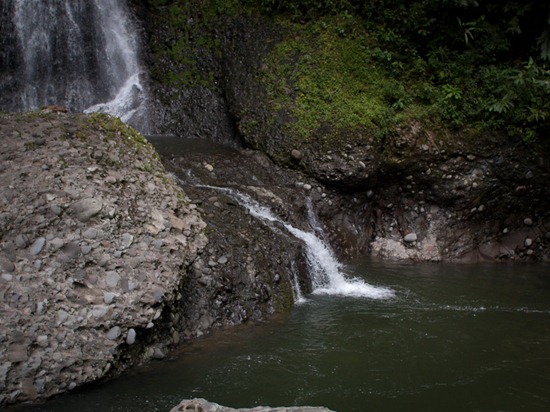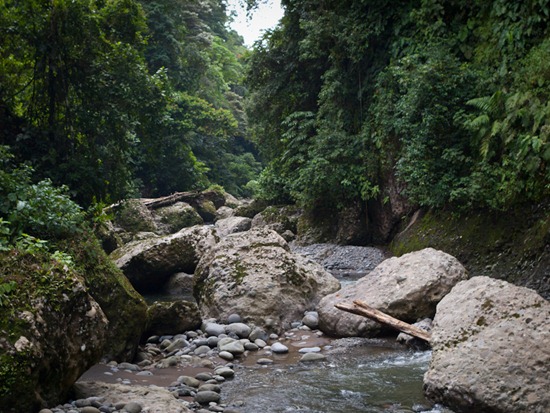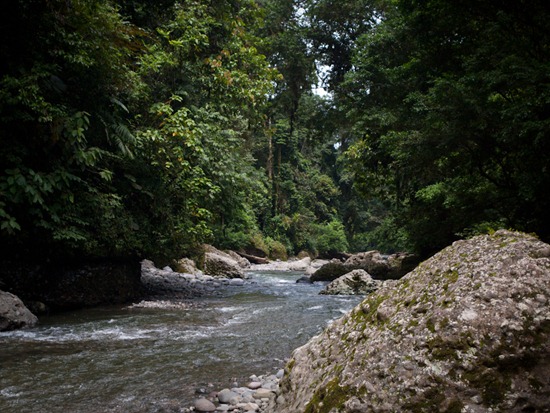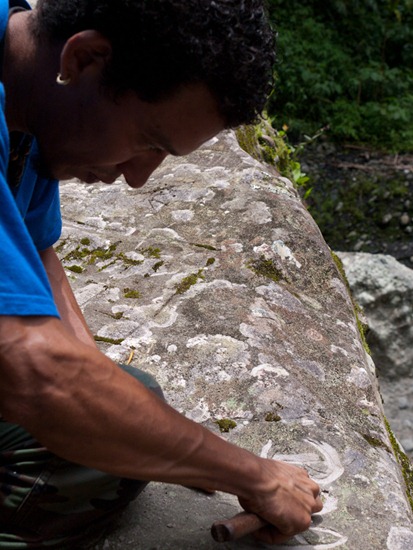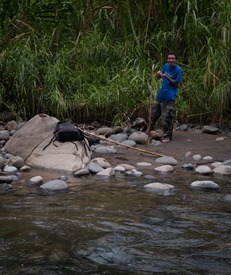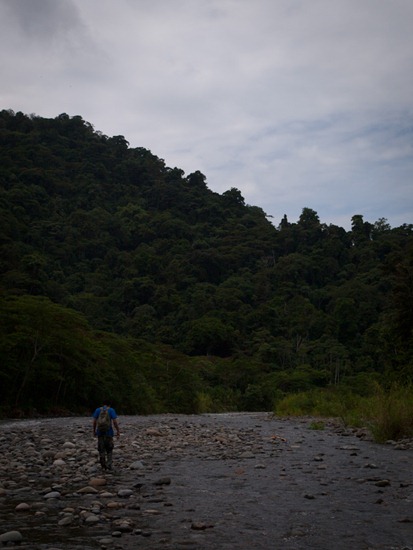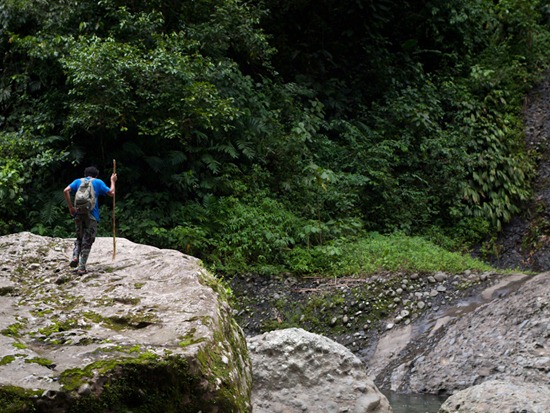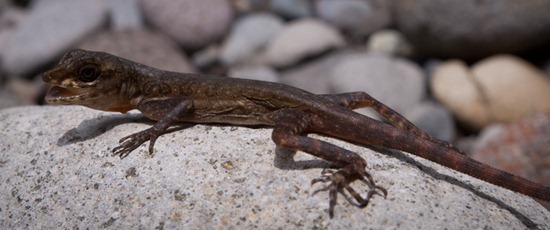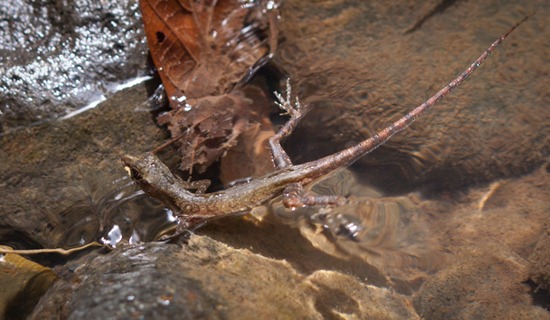I’ve seen and posted about Norops oxylophus on other trips, including to Hitoy Cerere, where this one was, and RBAMB.
Tag Archives: Hitoy Cerere
Rio Hitoy
Swimming in Hitoy
The river at Reserva Biologica Hitoy Cerere is clear and stunningly beautiful. Hiking up the river, I observed several species of fish, spiders, and an interesting crustacean. On the way back, I swam and watched some of the fish investigate me and the disturbance I created. There were several species, but I could only ID to family: characids, cichlids, poeciliids, and eleotrids. Some of the cichlids were rearing young – the adults protected a small school of fry. Additionally, some of the eleotrid (guavinas) males were in breeding color – stunning bright blue.
As I observed some fish in a deep pool, it began to rain and Boa took some photos… it was a bit dark and my camera wasn’t set properly, so the photos are blurry… I’ll just have to go back to get some better photographs.
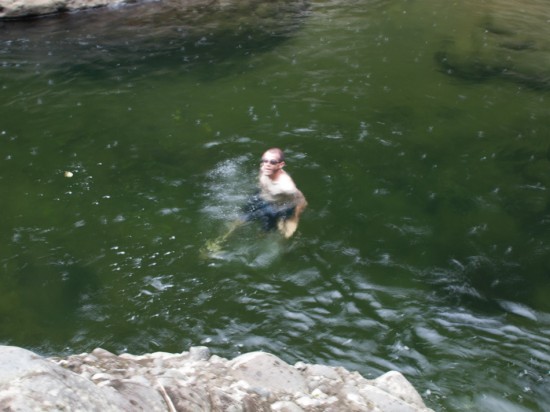
Oophaga with tadpole
A mother Strawberry Poison Dart Frog (Oophaga pumilio) transports her young around on her back. It appear that she was dipping one of her tadpoles in the phytotank (reservoir of water captured between leaves of a plant) of this bromeliad. Their genus means egg eater, which comes from the maternal behavior of feeding unfertilized eggs to the tadpoles. It’s the first time I observed an adult carrying its young!
An awesome shrimp
In Río Hitoy, there is a peculiar shrimp. It seems to inhabit cobble-dominated, high current velocity, areas of the river. I don’t know what it is or what it does, but it’s chelae are modified into large, hook-like structures.
UPDATE: I found a paper describing shrimp found in Boca Del Toro, Panama, which is pretty close to Hitoy. I had asked a friend, Bernald, which family of tropical shrimp may not have chelae (pinchers), and he suggested Atyidae. The paper describes Atyids, including Atya scabra, which is widely distributed (Aftrica to Panama) and looks similar to this species… so, we’ll call it Atya scabra…
Some large, stream-side, spiders
Leaf-litter toad
Río Hitoy Cerere
Evidencia
Norops oxylophus
This stream anole is frequently encountered in Reserva Biológica Alberto Manuel Brenes, and Boa and I found it at Hitoy Cerere.


